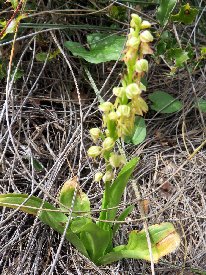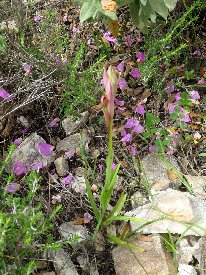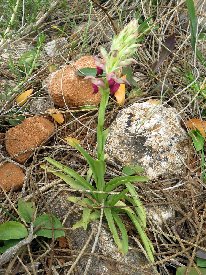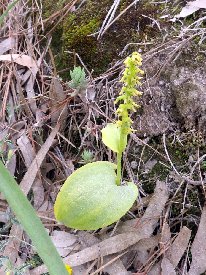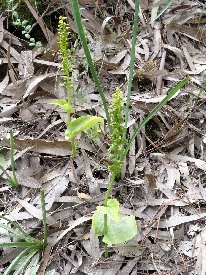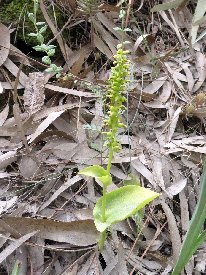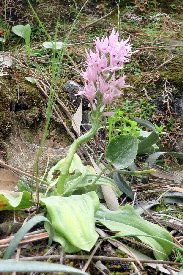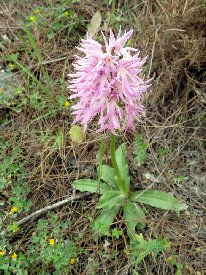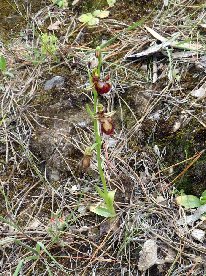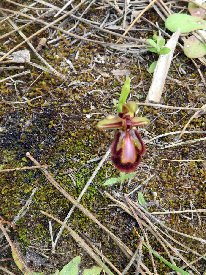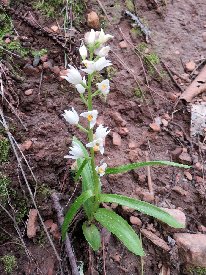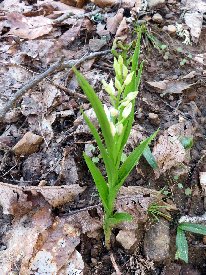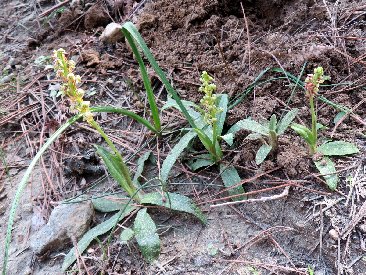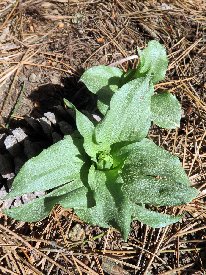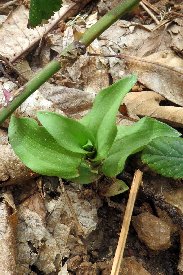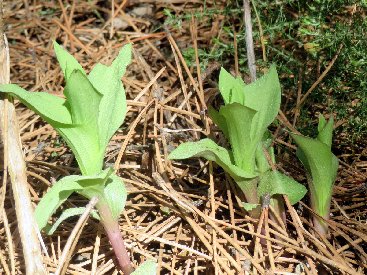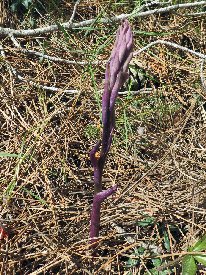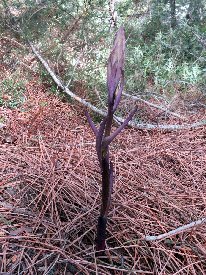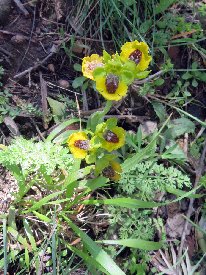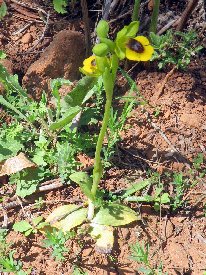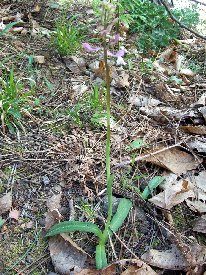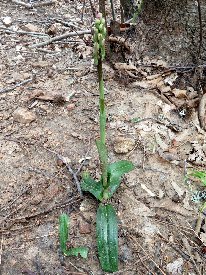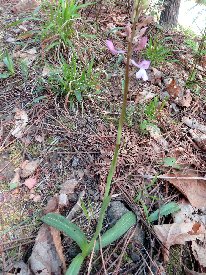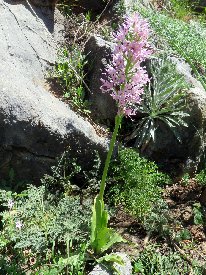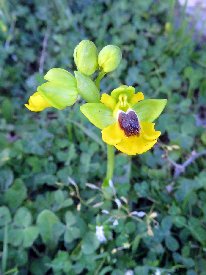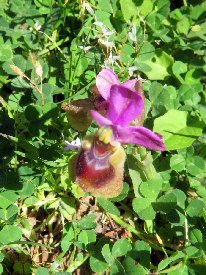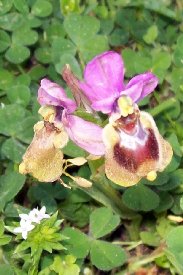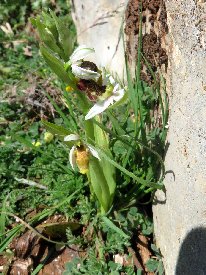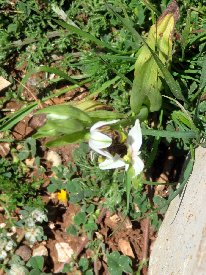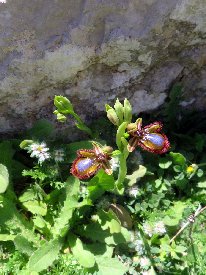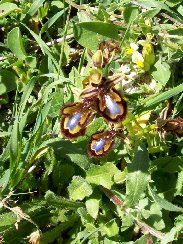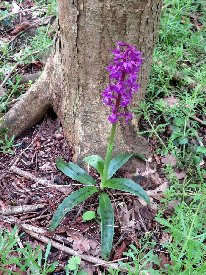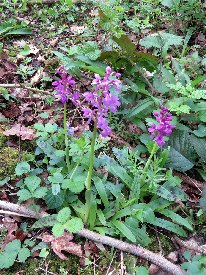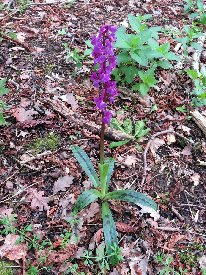|
|
|||||||||||||
|
|
|||||||||||||
 |
|
Malaga region 6-10th April Cerro Guerrero 6th April 2024 (36°37'11.90"N 4°33'33.70"W) A trip on the Teleferico (or cable car) to the top of the tallest mountain behind the resort was always on the cards, and it was worth it .... apart from having to climb the steep rocky last 200 feet or so. It was next to this path I spotted the one orchid of the day. A Man Orchid. And it was here that I found I couldn’t get the camera to focus at all. Tried various modes and settings, but still I could not get it to focus on that orchid. Eventually it dawned on me. I had fitted the telephoto lens a while back and not put the regular lens back on. What is more, the regular lens was back home in the cupboard. I was going to have to rely on snapshot camera with hit and miss auto focus and my phone. So apologies to all readers if my Spanish orchid pics are not up to scratch. The Man orchid does seem to be an orchid of altitude in this region. Abandoned development on MA-3303 7th April 2024 (36°37'18.38"N 4°43'50.80"W) Having picked up a hire car we set off on Ian Phillips’ route 1 in Orchids of Malaga, and had no success at the first sites mentioned. This is not going well. A couple of hours wasted. Pulled off this minor road to see exactly where we were on the maps and found we were at what was once going to be a housing development but had been abandoned. If I cannot find orchids from the book, why not look here? There were a couple of Serapsias parviflora and a few more Orchid coriophora, but only one of the latter had an open flower. Quarry south of Coin 7th April 2024 (36°37'58.15"N 4°46'41.37"W) Hoping luck improves as we find the quarry easily. The road passes between two parts of the quarry and we park half way between. The steep bank facing us seems the best place to start and immediately I spot some Orchis italica, a bit higher up than for comfort taking photos. Then low down, inches from doom by lorry tyres there are what we have come for; Gennaria diphylla. Not the most attractive orchid you will ever see, but for me it is not only a new species, but a new genus. They are small and green, but the brighter green leaves help them stand out from the dead eucalyptus leaves that cover the bank. There must be 20 or so in total. Around the bend there are more O. italicas and then some Ophrys speculum about to go over, but with some nice bright maroon colouring. A 200 yard walk down the road reveals nothing else. Refugio du Januar 8th April 2024 ( 36°34'38.30"N 4°53'5.02"W) This is a hotel in the hills amidst the forest accessed by a several kilometre drive up a windy road. We get there and I am hoping for a coffee before we get looking for orchids. Typically it was closed! A walk north and uphill from the hotel yields nothing, so we head down to the where the car is parked next to a stream. On the way we spot several Cephalanthera longifolia on the bank under the trees. Beyond the parked cars there are more, and we shall see that these are a feature of the area. Following the track into the forest there is a clump of Orchis anthropophora just above a hairpin bend. We continue into Sierra Blanca de Ojen and decide to take the path to the panorama viewpoint (or mirador as they say around here) overlooking Ojen and the area. But, it seems we take the wrong path. No matter, because there are some good finds here, just by where the path peters out below a steep rocky face. Here, under some pine trees, grow some Limodores. Ian Phillips maintains that L. traburianum is more frequent around Malaga, but these appear to be Limodorum arbortivum, though one plant does seem to have a slightly greenish stem. Sadly this is the same species we saw in Rhodes 2023 and like those they are not in flower. At the same spot are some Epipactis bursting through. There are two species associated with the woods around the Refugio, and we may have come across both. Epipactis tremolsii seems to have broader, more ribbed leaves, and this fits with the plants where one is already in bud. Epipactis lusitanica has narrower, more pointed leaves and this fits better with another plant. Continuing back we find nothing in a untended olive grove, but across the road there is the inevitable Ophrys lutea dotted around between bushes.
The main intent here was to find Red Helleborines and the best chance for those was the chestnut woods close to the hotel across the stream to the parked cars. However, it has been said that over-pruning of the trees had badly affected this species here, and the trees still not have recovered. However we do find yet another species; Anacamptis champagneuxii. These are supposed to flower from mid March, but are late starters this year or at least up here. Some have spotty leaves and some do not. As we leave heading for the main road we suddenly spot a rather robust Orchis italica on the roadside. A check on some patches of pine further down which also have had Red Helleborines recorded previously yield nothing. Despite this, eight species in one locality is not bad at all. Torqual de Antequera 10th April 2024 ( 36°58'26.80"N 4°34'32.68"W) We arrive up here a bit later than expected due to going wrong on the way to the dolmens at Antequera and finding that they make you take the long way around to get to the entrances. Still, up here in the Torqual the views are fantastic and so is the karst landscape with the limestone cracked and eroded into weird shapes. In fact when we arrive the car park is full and we are instructed to turn around and find a roadside spot, but with all four wheels off the tarmac. It is quite a way before we find such a place. This is a blessing in disguise because the only orchids we see up here are between the car and that distant car park and visitor centre.
And that is it for Spain 2024. Some new species recorded, and some usual suspects. Would have liked to see a whole lot more, and nowhere did orchids grow en-masse. Spain is just not up with Greece and Cyprus when it comes to Orchids. Erlas Black Wood 18th April 2024 (SJ 37772 50090) Visiting here 19 days earlier than last year (first time) and yes, the Early Purple Orchids are doing fine. What is noticeable is the amount of rain we must have had this spring because much of the wood is a quagmire! We skirt around to avoid having to scrape tons of mud off our footwear. This site is very local to me, but unfortunately there is not too much to get excited about; just bog standard EPOs with little colour variation. |
|
|
||||||||||||||
